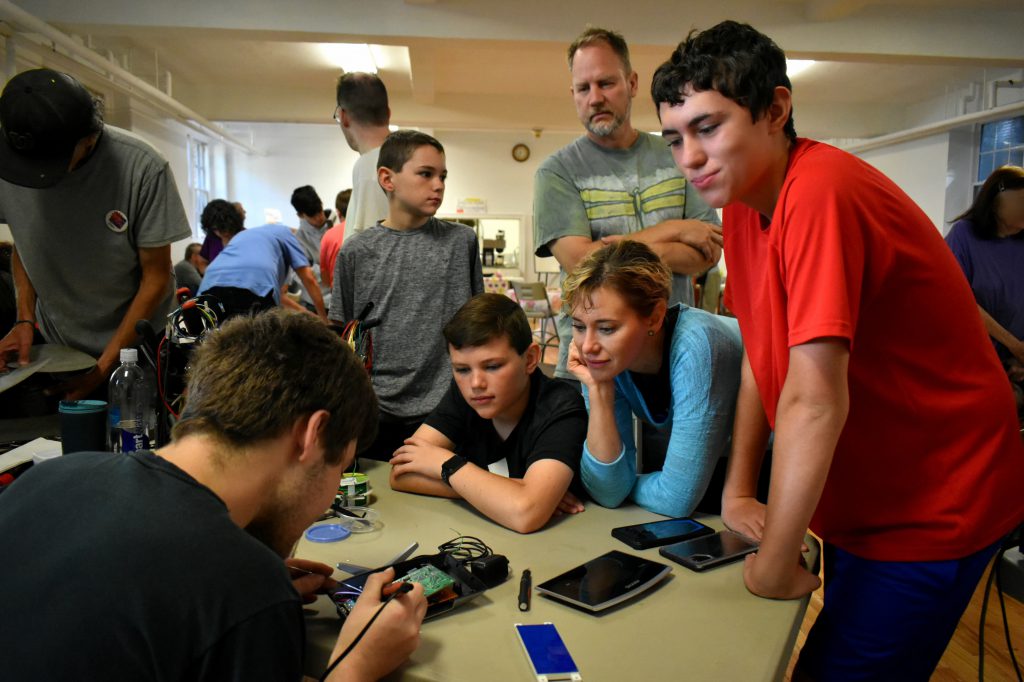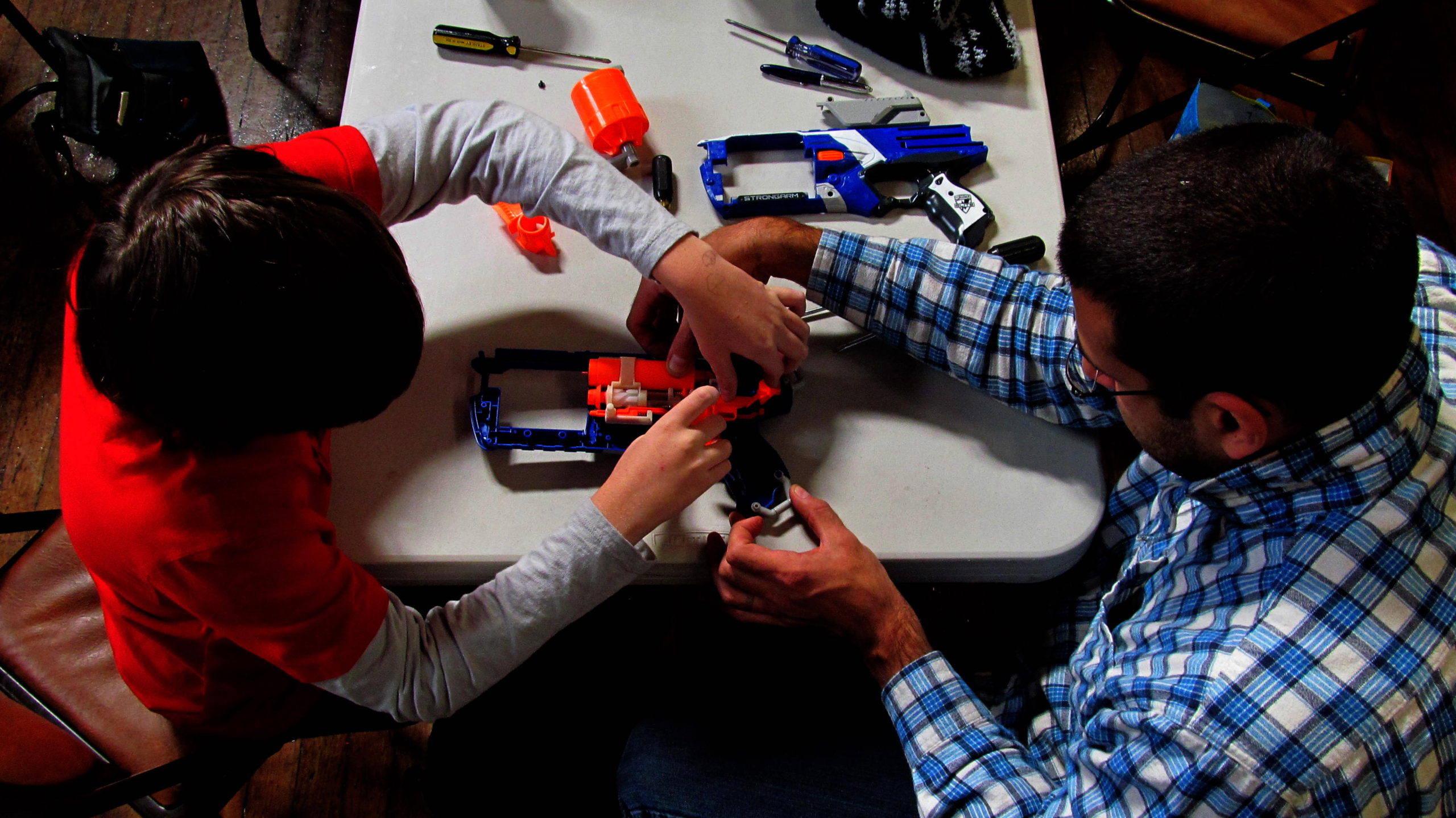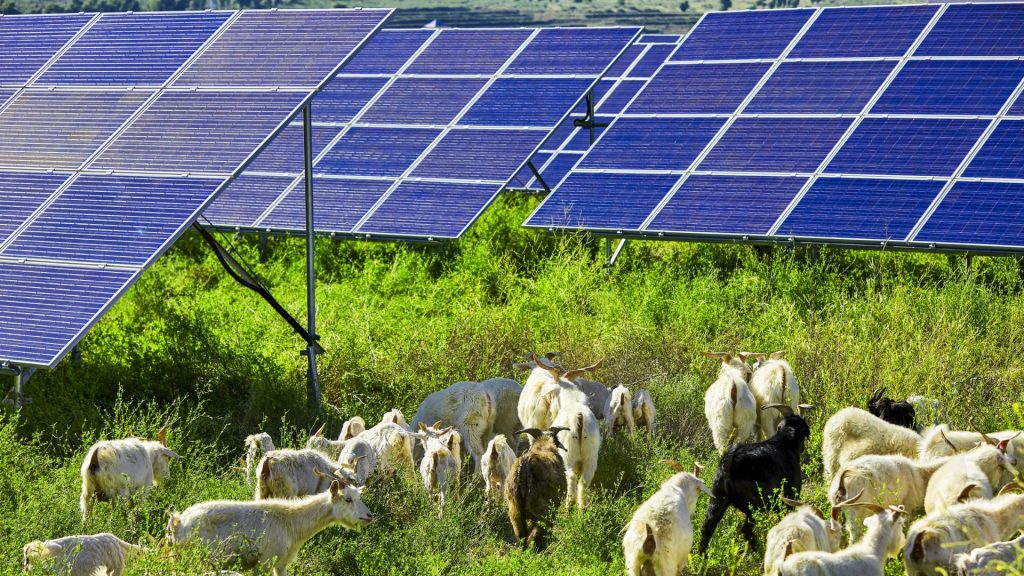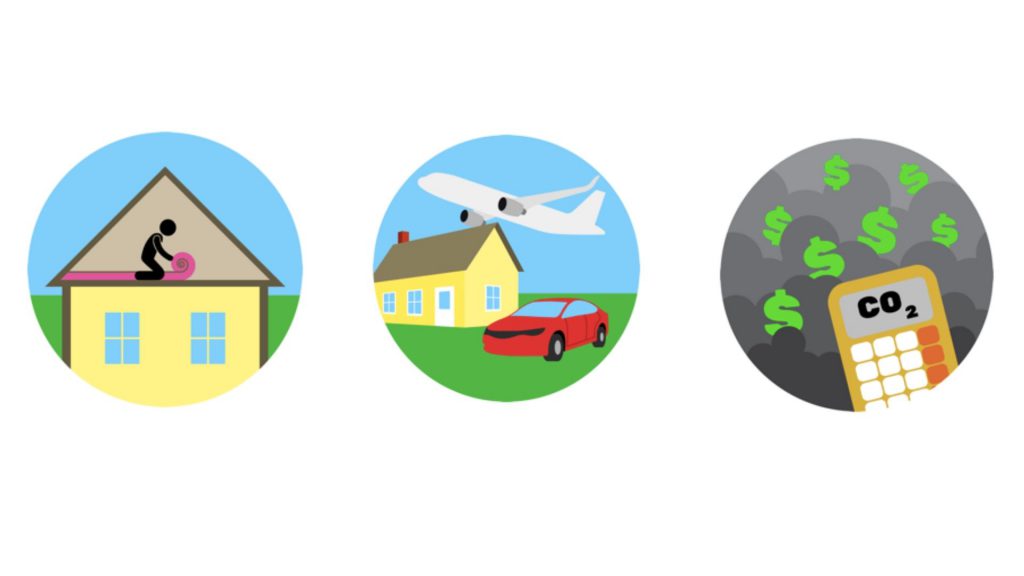This is the third post in our Community Climate Champions series highlighting individuals and organizations building a better future for their neighborhoods. In this edition, we focus on Repair Cafe Hudson Valley.
We can’t all be handy.
In full transparency, I personally don’t know how to sew holes shut in my clothing or fix a clock that’s stopped ticking. I should probably practice skills like these more often, but rarely get the opportunity or proper instruction. Just last month, for instance, my TV remote stopped working. I tried swapping out the batteries (I’m not completely useless), but still got nothing. So I bought a new one online, grumbling about the price and inconvenience, and moved on.
But in doing so I didn’t just spend a few extra dollars–I demanded a whole new product, doubling the amount of materials and shipping emissions required to put my favorite shows on in the living room.
You know the worst part? There was probably someone right in my neighborhood with the know-how and tools to fix it for me if I could get in touch with them. I just didn’t know how.
That’s exactly the motivation behind Repair Cafe Hudson Valley, a set of fixing-focused communities dedicated to working together to repair worn belongings.
The idea is simple: a group of neighborhood fixers and people-who-need-fixing get together once a month, or perhaps every other month, to bring damaged items back to life and avoid the wasteful cycle of one-time use. In doing so, community members save money on repairs, reduce waste, and empower one another with the ability to solve their own problems right in their neighborhoods.
That sure beats throwing belongings in the garbage. Sound too convenient to be true? Here’s how it works.
Table of Contents
How Repair Cafes Work
Repair Cafes are organized and run exclusively by members of local communities. Fixers from the local area gather in a recurring location, like the town building, a school, or a local shop, to share their gifts in a variety of trades.
When you walk into a local repair cafe, you will find repair coaches who come to help you fix your items. Core repair categories are mechanical, electrical, and electronic repairs, as well as clothing and textile mending. Some towns are also able to offer digital repairs, bicycle tune-ups, blade sharpening or even metal welding.
It’s not just simple fixes that go on, either. Experts at repair cafes take on all kinds of projects. Repaircafe.org analyzed over 14,000 local repairs and found that complex products like vacuum cleaners and laptops made it into the top 10 most common repairs at cafes. Other common repairs included lamps, bikes, sewing machines, clocks, radios, coats, trousers, irons, jewelry, electric kettles, and knives.

About two-thirds of repairs attempted at repair cafes are successful. Of the remaining 35%, about half (46.7%) were hopeless cases to begin with. As a testament to the expertise and dedication of the average local fixer, just 13.6% of unsuccessful repairs can be attributed to a lack of time or knowledge.
In other words, most of the time, if your item can be repaired, it will be.
The program is all-volunteer, with no financial incentive to repair others’ items. Fixers do it for the love of their community and the spirit of reuse. Not only does this preserve the integrity of the community Repair Cafe Hudson Valley has built–it also reassures those in attendance that they’re not getting swindled or misled. In many industries, experts usually have the opportunity to overcharge due to an information gap between them and their customers. At your local repair cafe, you know you’re getting an honest solution.
How Repair Cafes Have Responded To the COVID-19 Pandemic
In-person repair events have been suspended indefinitely during the COVID-19 pause, but “virtual repair” events, available to everyone online, have been organized by Repair Cafes and Fixit Clinics around the world: in North Carolina, Berkeley, CA, in London, the Netherlands, Sweden and even all the way to India. Hastings-on-Hudson and Tarrytown in New York combined to offer virtual DIY Workshops. As the first step towards resuming in-person repair, some Hudson Valley towns will begin offering “Open Air Repair Cafes” in the late Summer or Fall. These will be outdoor events, with social distancing and the same kind of protocols initiated for outdoor dining.
A Community Solution To Community Problems
Repair Cafe organizers are community champions, both in climate and culture. The truth is providing local repair goes beyond saving an individual a few bucks and supporting the circular economy.
From the world’s first Repair Cafe in Amsterdam 10 years ago to the flourishing culture that exists today, the mission of community repair has never waivered. Repair cafes exist to:
- Keep things out of landfills
- Extend the useful life of objects we own
- Honor those who have repair skills and give them opportunities to pass them on
- Satisfy our curiosity about the way things work
- Create community and build resilience together
Making fixing accessible is a reinforcing cycle. Yes, fixers provide a much-needed service on a given day, but they also impart knowledge–knowledge that might help a visitor repair their own item, or a friend’s item, down the line.
That collective knowledge builds over time. It keeps solutions within the community so people don’t need to turn elsewhere when they face challenges. It facilitates trust between neighbors and sets a precedent for community service and resilience. The motto is right on the organization’s homepage: take care–and take care of each other.
What’s more: Repair Cafe Hudson Valley turns what might seem like a chore into a good time with live music, bake sales, and other fun entertainment. Fixing items becomes an educational, interactive experience. All in the name of minimizing waste!
The Hudson Valley’s Spirit of Repair
Repair cafes are popping up more frequently around the world, but perhaps nowhere as commonly as this region of New York. I asked volunteer organizer John Wackman how he mobilized so many Hudson Valley and Catskills residents to coordinate the repair cafe movement.
“I first heard about the concept of Repair Cafes from a New York Times article about the first one in Amsterdam in May of 2012,” John told me. “All the early repair cafes in the USA, we all read that same article. I decided to start it here, and it’s been thriving ever since.”
Thriving is a good term to describe the influx of repair cafes popping up in counties just north of New York City–more here than anywhere else in the country. All told, repair cafe events are now held in more than 35 locations in 10 counties across the Hudson Valley and the Catskills, all organized by the people in each town. Prior to the COVID-19 pandemic, a new Repair Cafe was popping up almost every month. One day John hopes to see one in every local town.
“Some are large and some are small,” John told me. “In Phoenicia up in the Catskills, there might be only 6 people doing repairs for the 20 or so people who bring their broken items. Then you go to, say, Rockland County, and they probably have 20 people doing repairs and more than 100 people coming. Each town figures it out for themselves–my role is to communicate and coordinate to help each one succeed.”
This local ownership makes repair cafes that much more special. There’s no advertising, no bargaining, just teamwork making the dream work. Like any local movement, they spread primarily through word of mouth. People hear about an event in a neighboring town and say, Hey, why aren’t we getting involved in that?
But again the question arises: why here?
“There’s nothing proprietary about getting a group of people together to fix stuff,” John said. “It’s been thriving in the Hudson Valley, and there are a number of reasons I could speculate about why.
“First, the Hudson Valley has a long history of environmental activism. There have been many assaults on the Hudson River going back a century – including dynamiting the Palisades [a line of steep cliffs along the river] for construction gravel. It wasn’t until a coalition led by women in the Hudson Valley said this has to stop, that it ended.”
It goes back even further. “You can go back all the way to the Hudson River school of painters,” John continued. “The Hudson Valley is a dramatically beautiful region, so we have it in our psyche that we have to protect it.”
It’s a rare achievement to unify communities around a shared cause. But if local people can do it with repair, who’s to say we can’t do it with renewable energy? Energy efficiency? Sustainable agriculture? When we find solutions that benefit our pockets and our planet, everyone wins.
“There’s such a high level of gratification on both sides of the table,” John concluded. “The people who bring things are so grateful to have them repaired, and the people who do the work feel enormously gratified as well.”
Like learning about community solar?
Join our monthly newsletter to hear about more renewable energy news and bold climate challenges.




